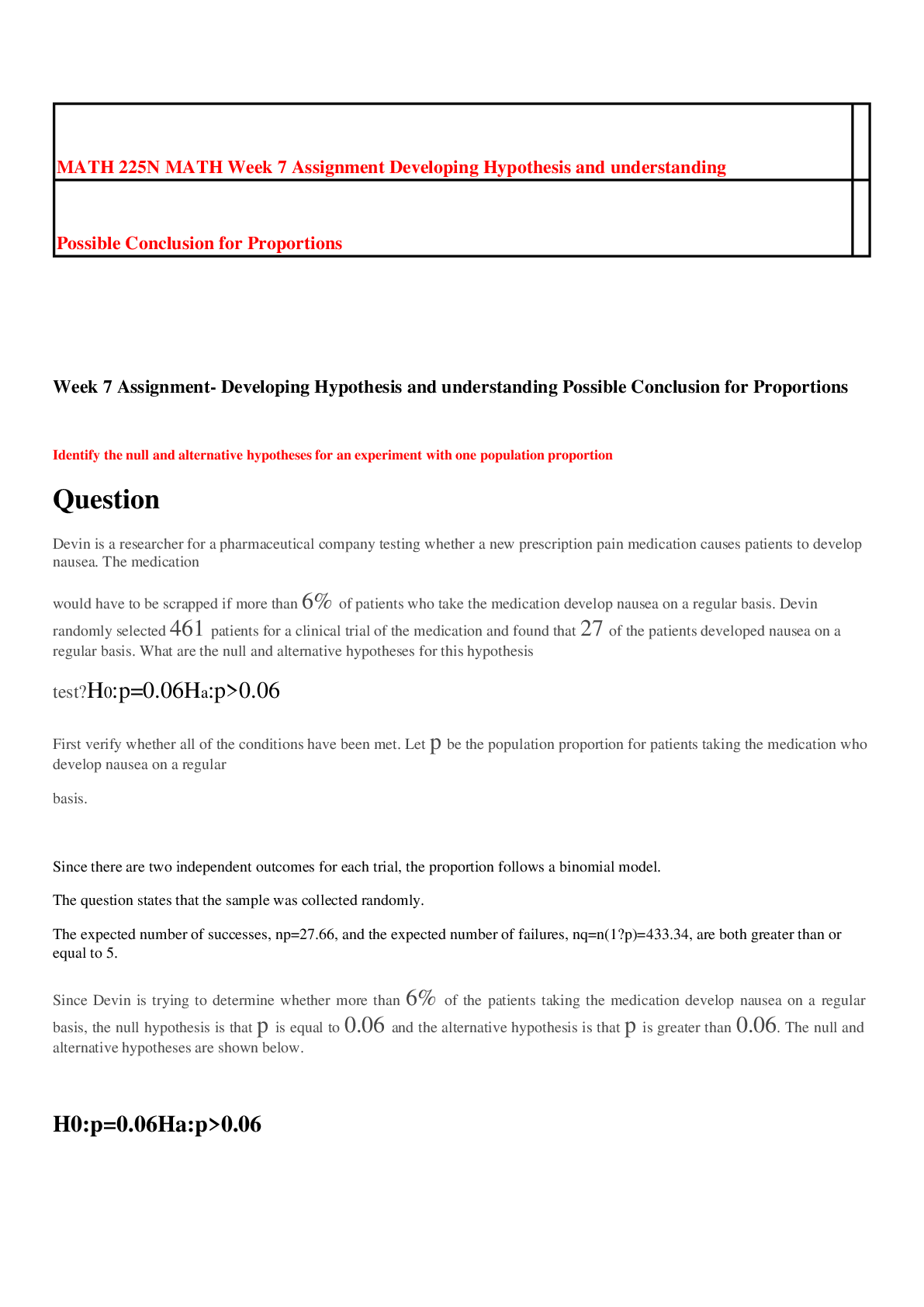Mathematics > EXAM > MATH 225N Unit 7.1 Developing Hypothesis and understanding Possible Conclusions (All)
MATH 225N Unit 7.1 Developing Hypothesis and understanding Possible Conclusions
Document Content and Description Below
MATH 225N Unit 7.1 Developing Hypothesis and understanding Possible Conclusions>Question: Which type of test is used in the following scenario: The mean cutting rate of two competing table saws is to... be compared. Fourteen cuts are randomly selected and measured for cutting speed to test if the speeds were different from each other. Both populations have normal distributions with known standard deviation. Answer: The hypothesis is two-tailed because the alternative hypothesis is Ha:μ1≠μ2. In order for saw 1 to have the same cutting speed as saw 2, the mean cutting rate of saw 1 must be equal to the mean cutting rate of saw 2: μ1=μ2. The null hypothesis must have some form of equality, so Ha is μ1−μ2≠0 and H0 is μ1−μ2=0. Since the test is used to determine if the difference μ1−μ2 is significantly different from 0, the test is two-tailed. Question Determine the Type I error if the null hypothesis, H0, is: researchers claim that 65% of college students will graduate with debt. Answer: The researchers think that greater than or less than 65% of college students will graduate with debt when, in fact, 65%will graduate with debt. A Type I error is the decision to reject the null hypothesis when it is true. In this case, the Type I error is when the researchers think that greater than or less than 65% of college students will graduate with debt when it actually will be 65%. Question: A consumer protection company is testing a seat belt to see how much force it can hold. The null hypothesis, H0, is that the seat belt can hold at least 5000 pounds of force. The alternative hypothesis, Ha, is that the seat belt can hold less than 5000pounds of force. What is a Type II error in this scenario? Answer: The researchers conclude that the seat belt holds at least 5000 pounds of force, but the seat belt actually holds less than 5000 pounds. Remember that a Type I error is rejecting the null hypothesis when the null hypothesis is true. A Type II error is not rejecting the null hypothesis when it is false. We are asked for the Type II error in this scenario. Failing to reject the null hypothesis means failing to reject the statement that the seat belt can hold more than 5000 pounds. Therefore, a Type II error is: The researchers conclude that the seat belt holds at least 5000 pounds when in reality it holds less than 5000 pounds. Question A city claims that the mean number of public transportation users per day is at least 4,800. A group of researchers think this is not accurate and want to show that the number of public transportation users is less than 4,800. Identify the null hypothesis, H0, and the alternative hypothesis, Ha, in terms of the parameter μ. Answer: H0: μ≥4,800; Ha: μ<4,800 Let the parameter μ be used to represent the mean. Remember that the null hypothesis is the statement that the researchers are trying to reject. So, in this case, the null hypothesis is the city's claim that μ is at least 4,800. In symbols, H0 is μ≥4,800. [Show More]
Last updated: 2 years ago
Preview 1 out of 14 pages
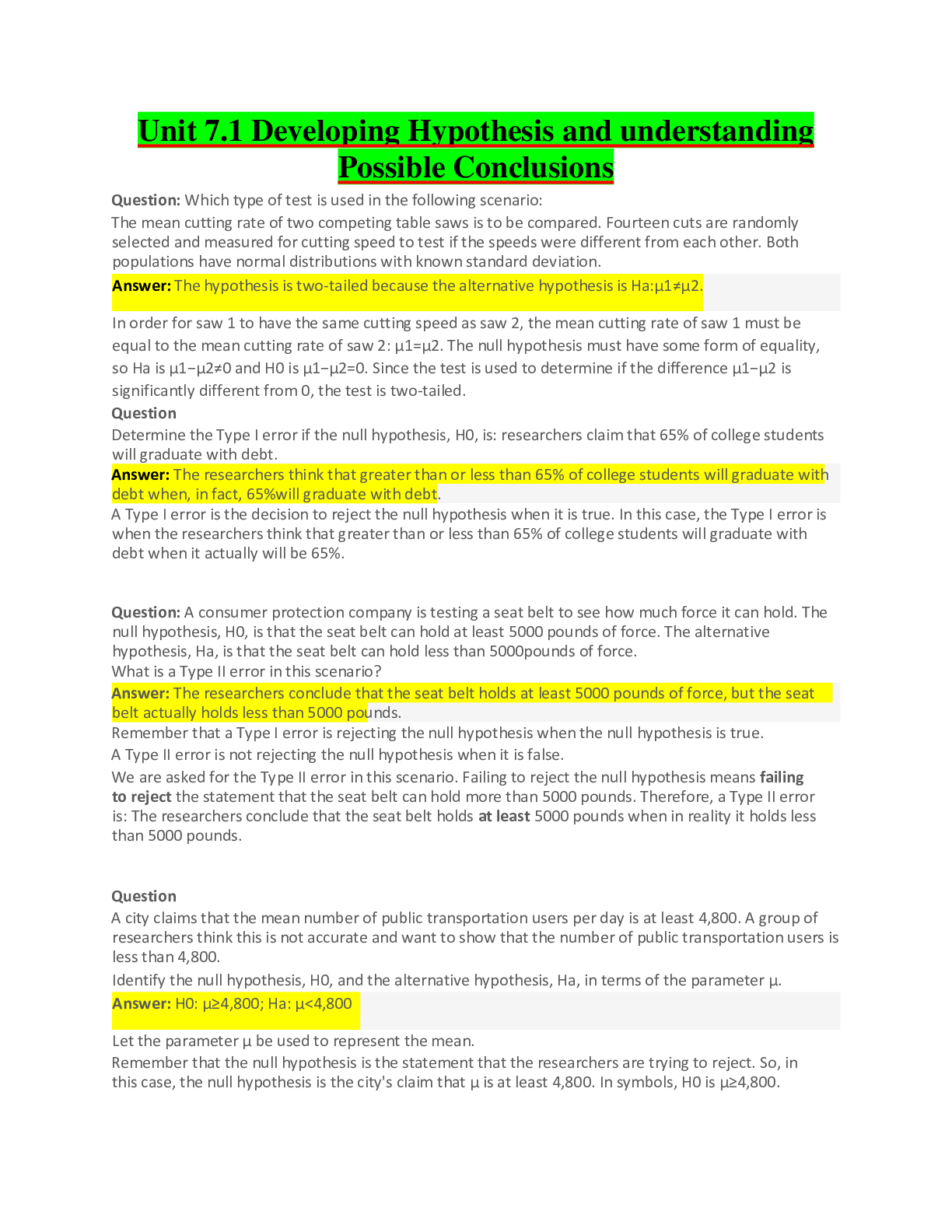
Buy this document to get the full access instantly
Instant Download Access after purchase
Buy NowInstant download
We Accept:

Also available in bundle (2)
MATH 225N Week 7 Bundle: Homework Assignments, Lab Assignment, Discussion (A+ Solutions & Guide)
MATH 225N Week 7 Bundle: Homework Assignments, Lab Assignment, Discussion (A+ Solutions & Guide)
By PROF 4 years ago
$60
12

MATH 225N WEEK 1 TO 8, LAB ASSIGNMENTS, HOMEWORK HELP, QUESTIONS & ANSWERS ALL GRADED A, DISCUSSIONS & SAMPLE EXAM QUESTIONS & ANSWERS. (Download to score an A)
MATH 225N WEEK 1 TO 8, LAB ASSIGNMENTS, HOMEWORK HELP, QUESTIONS & ANSWERS ALL GRADED A, DISCUSSIONS & SAMPLE EXAM QUESTIONS & ANSWERS. (Download to score an A)
By PROF 4 years ago
$85.5
38
Reviews( 0 )
$15.50
Can't find what you want? Try our AI powered Search
Document information
Connected school, study & course
About the document
Uploaded On
Apr 29, 2021
Number of pages
14
Written in
Additional information
This document has been written for:
Uploaded
Apr 29, 2021
Downloads
0
Views
105

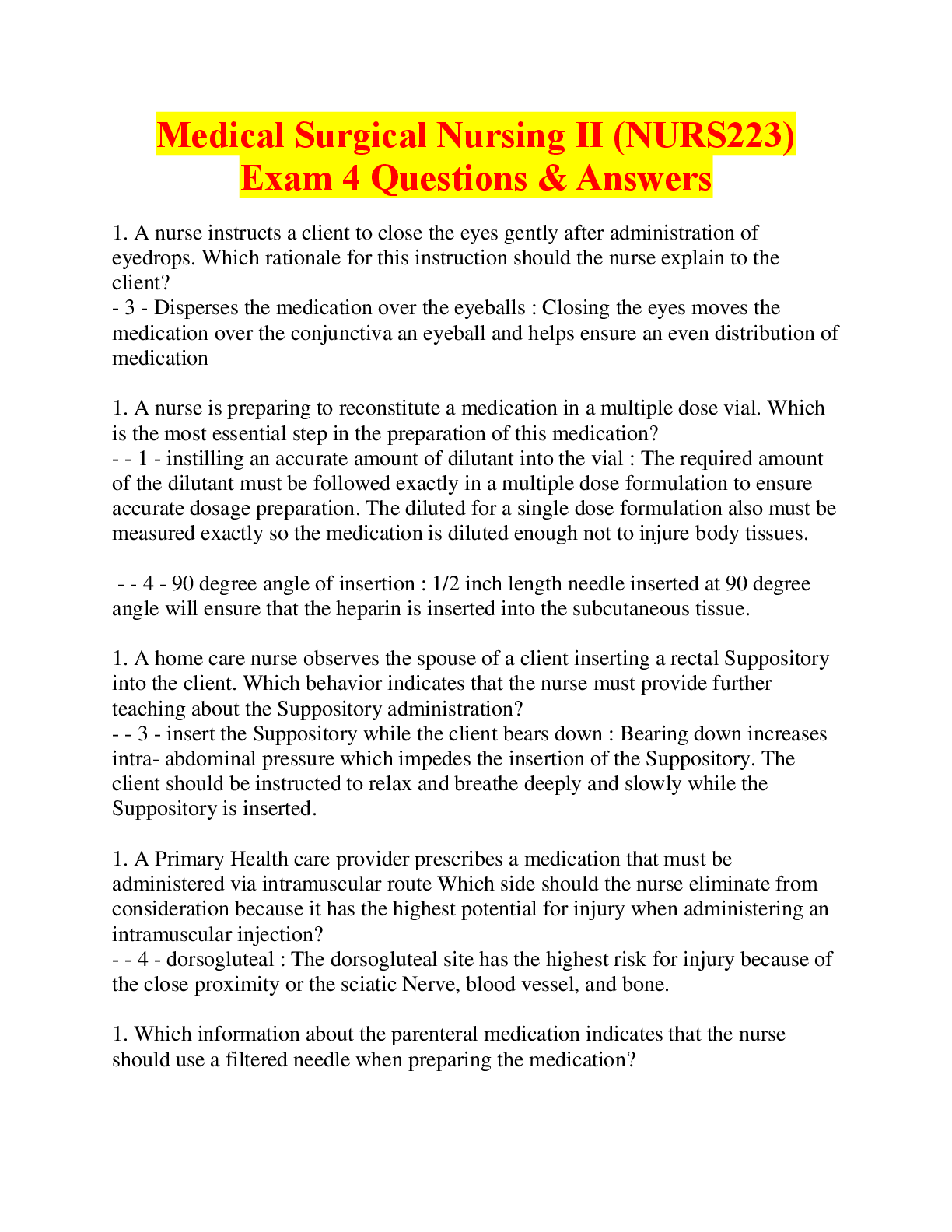
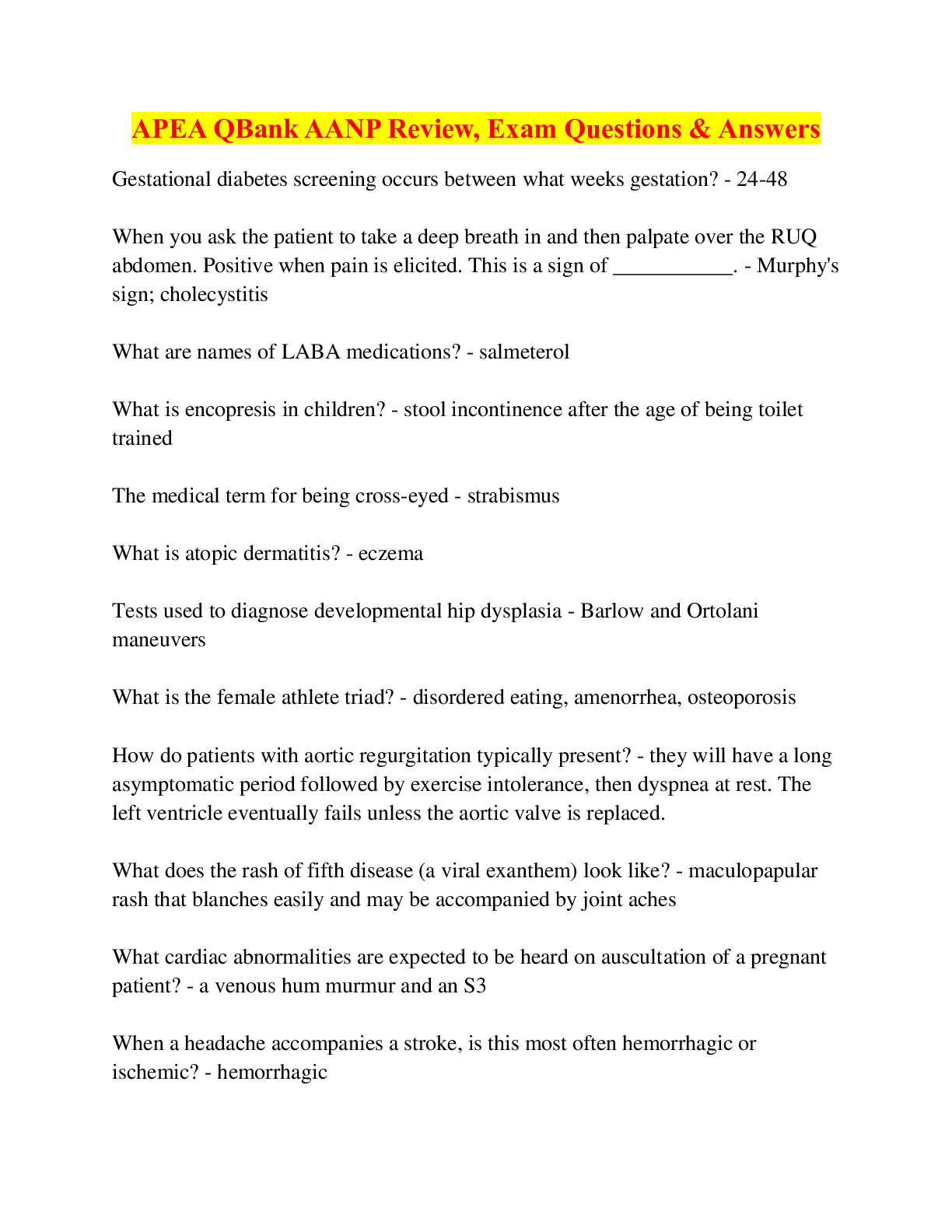
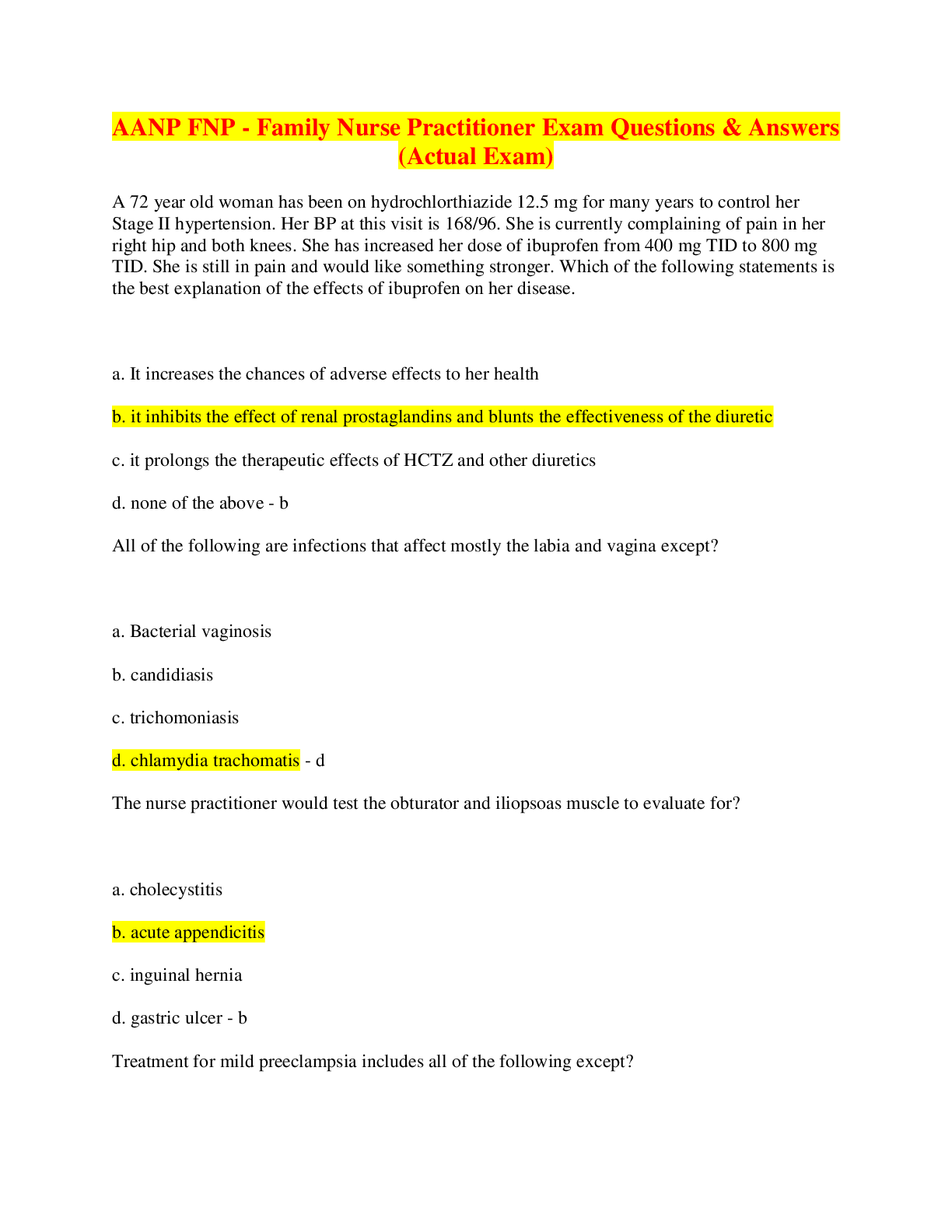

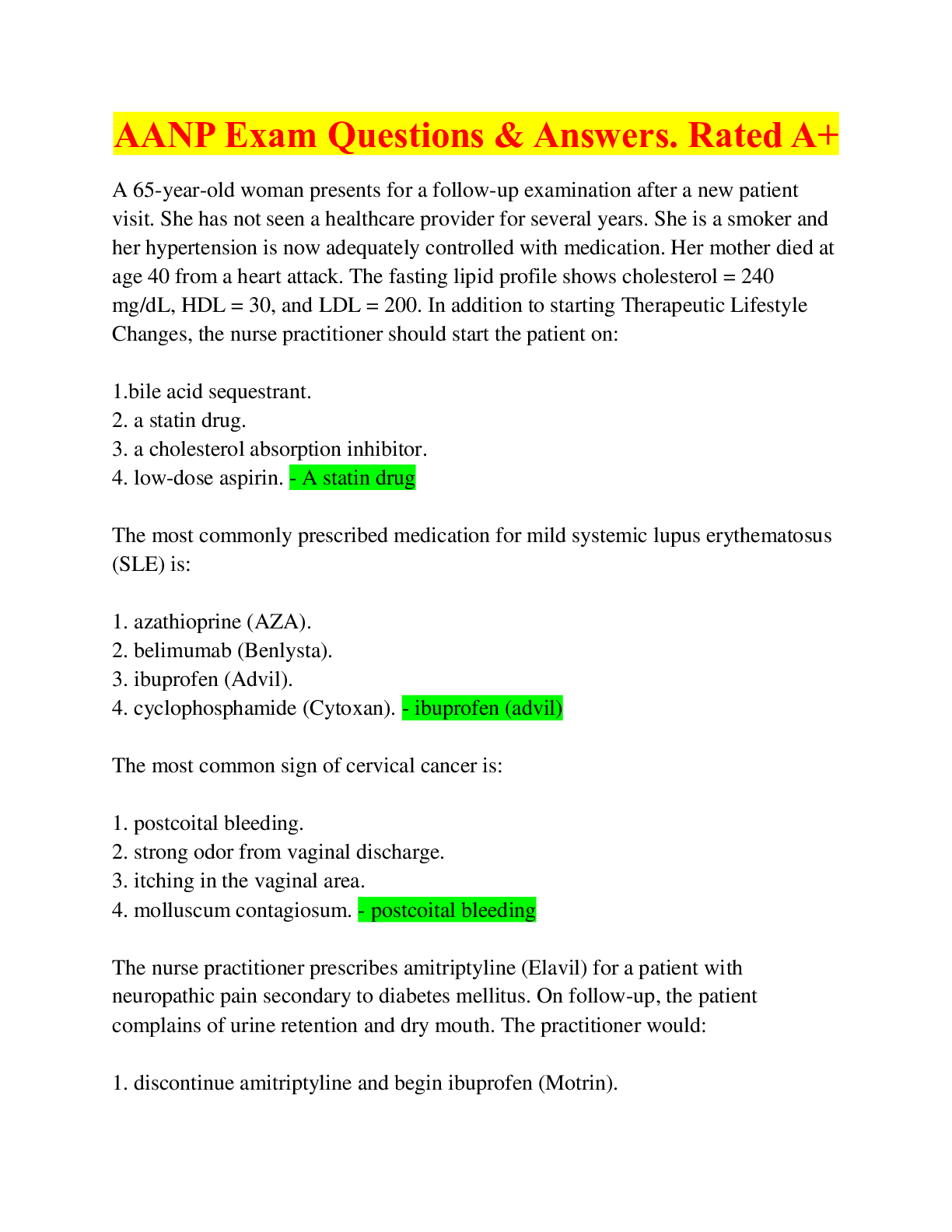
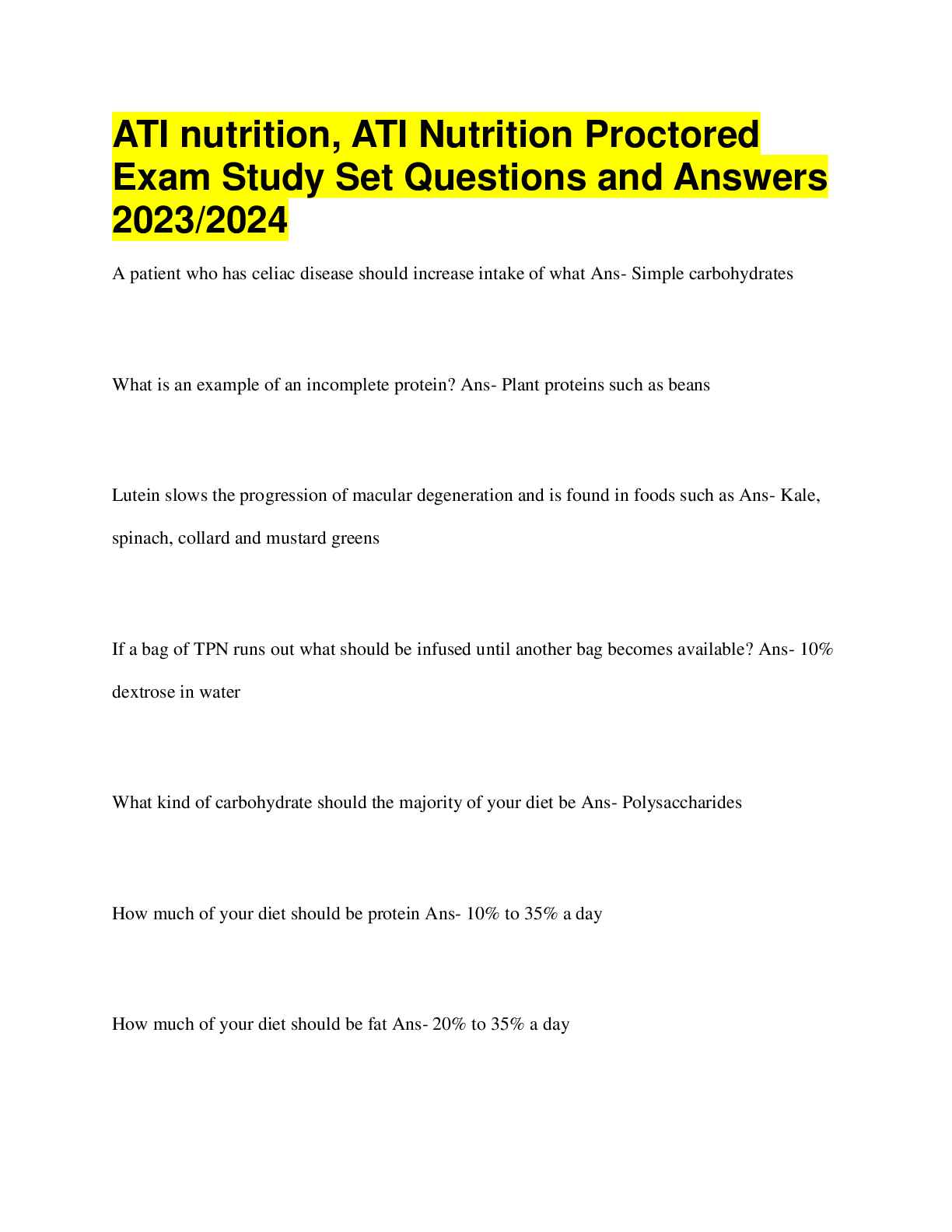
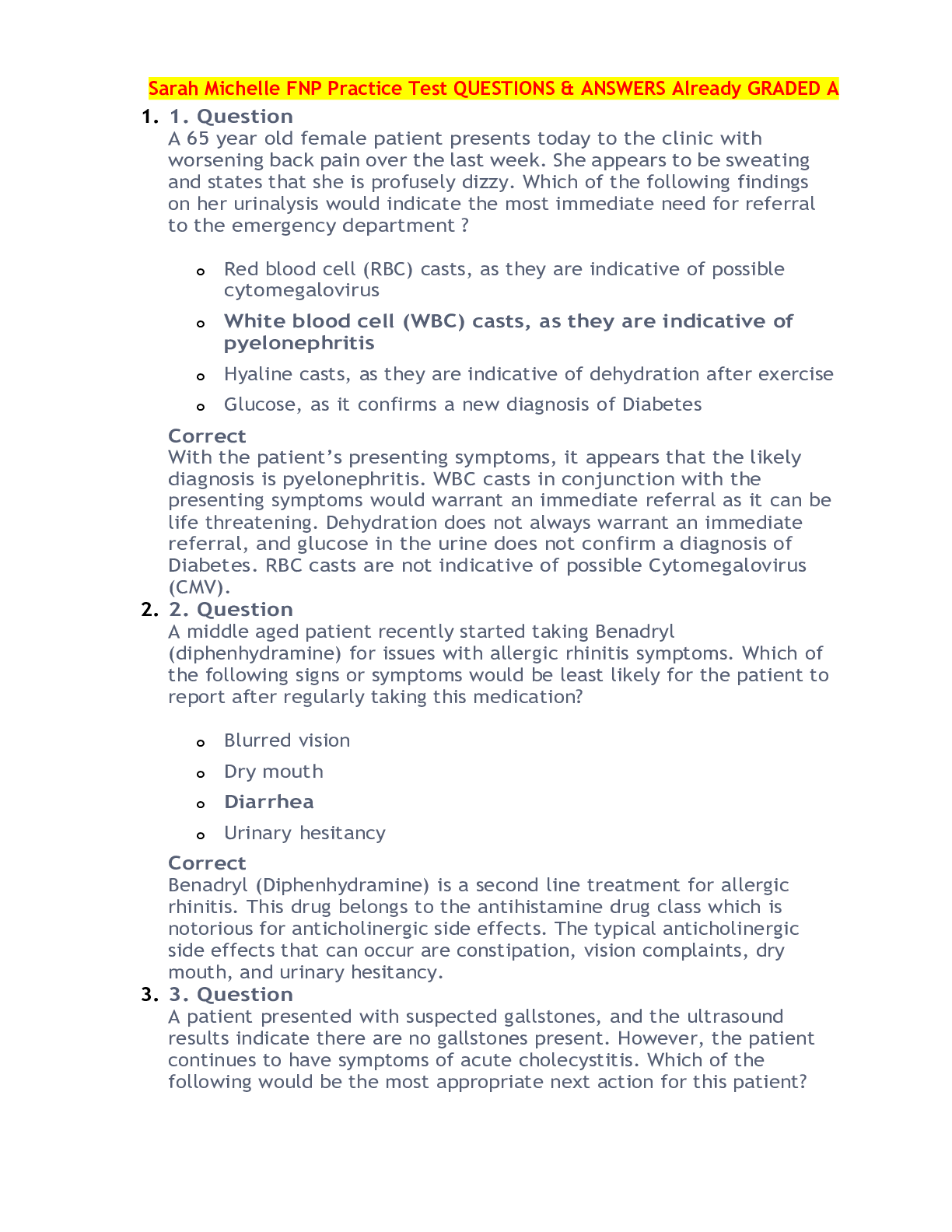
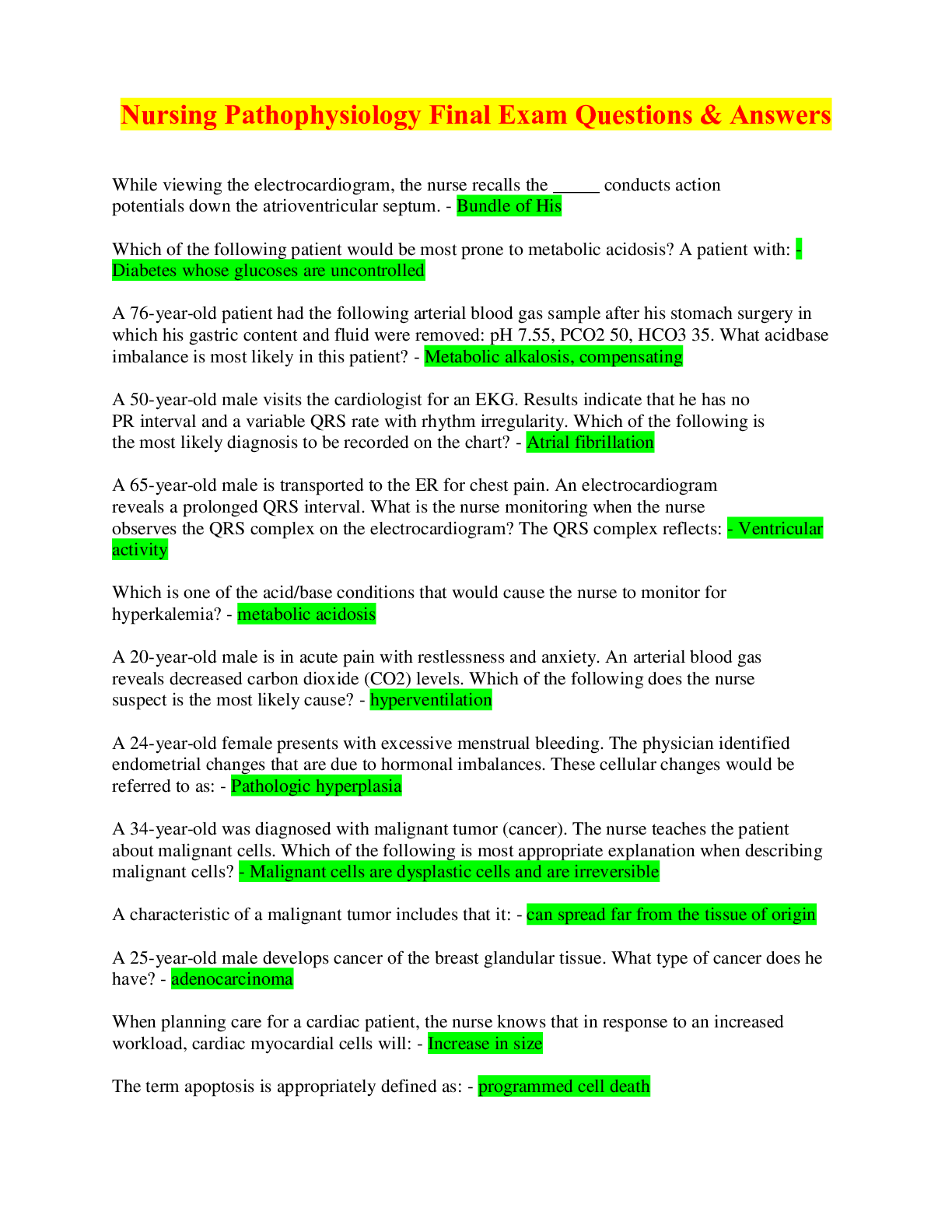
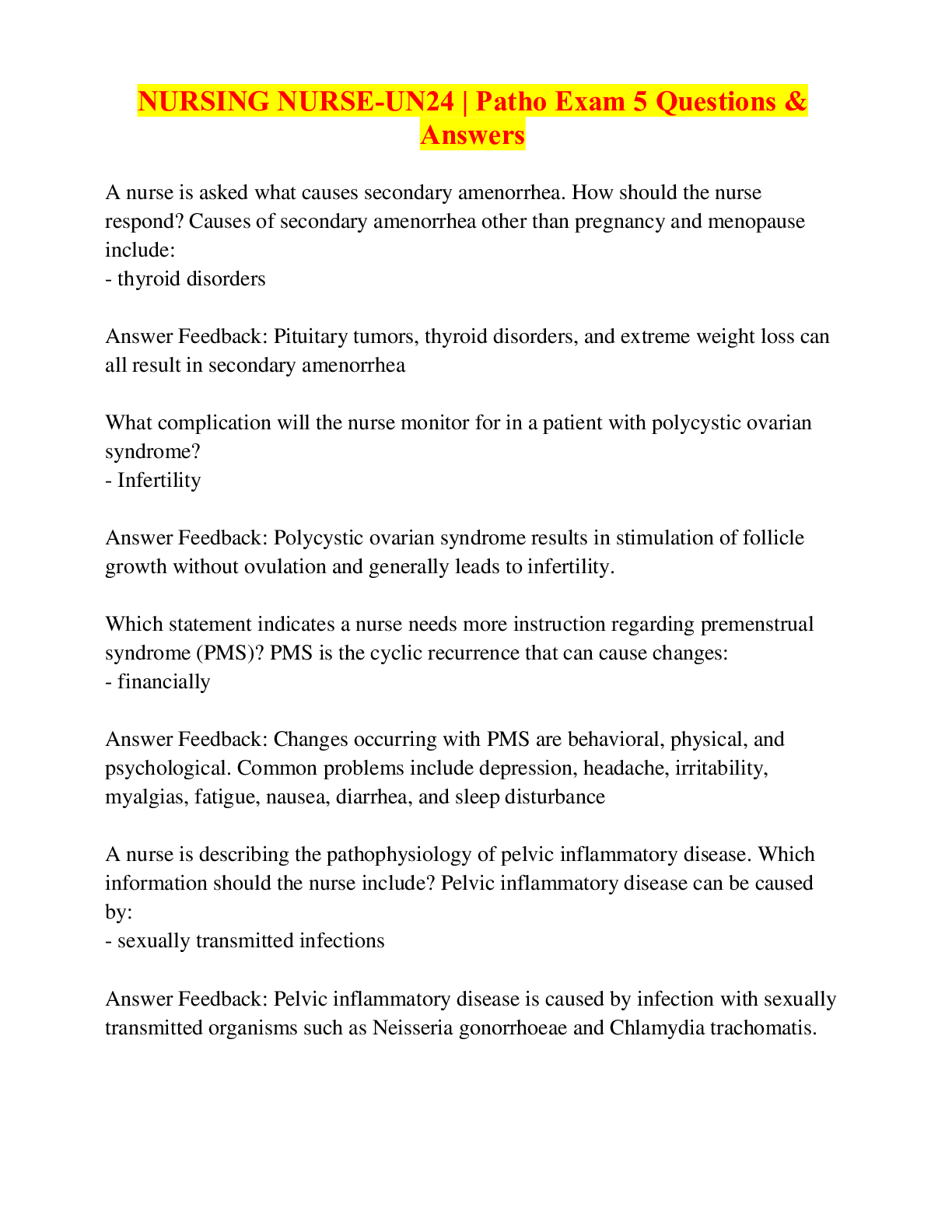

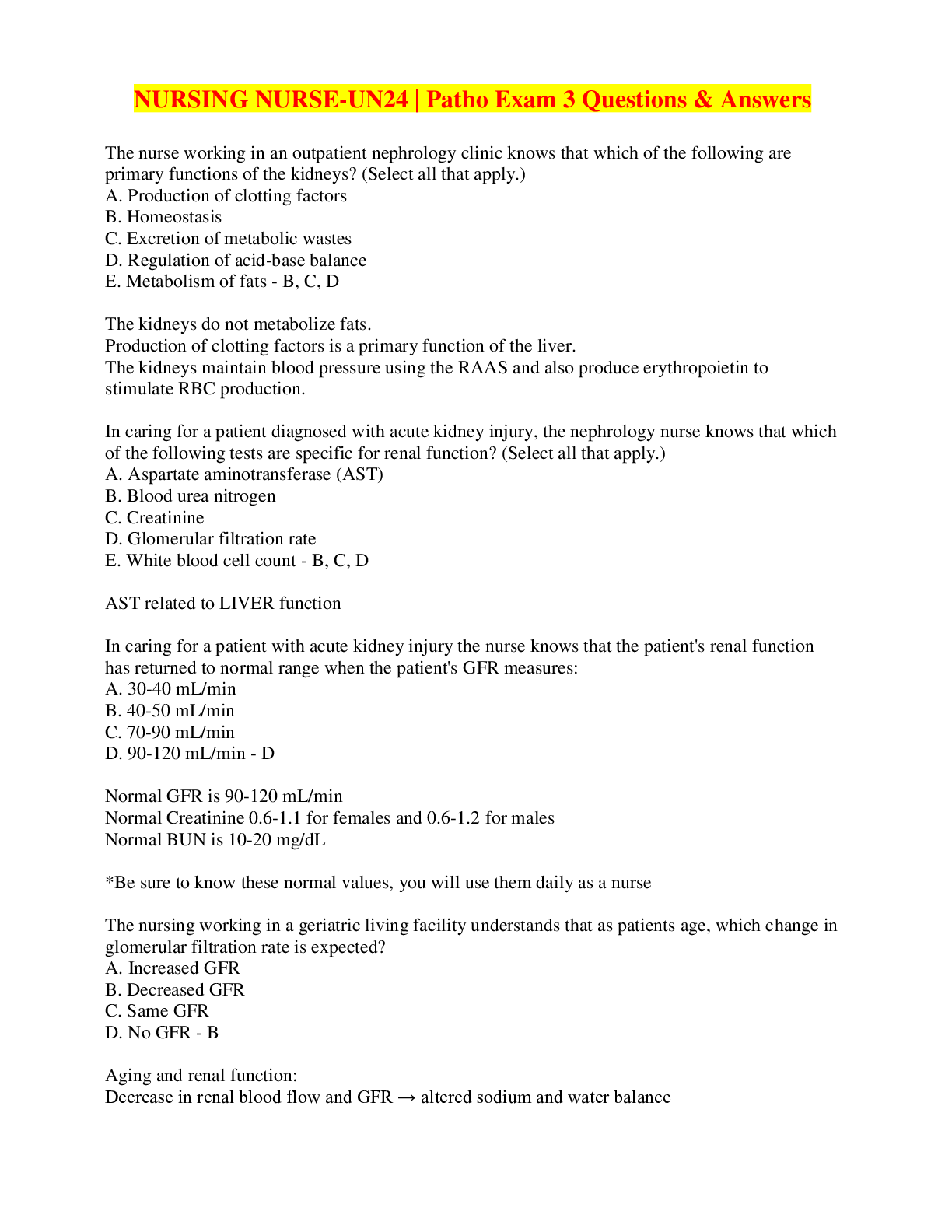
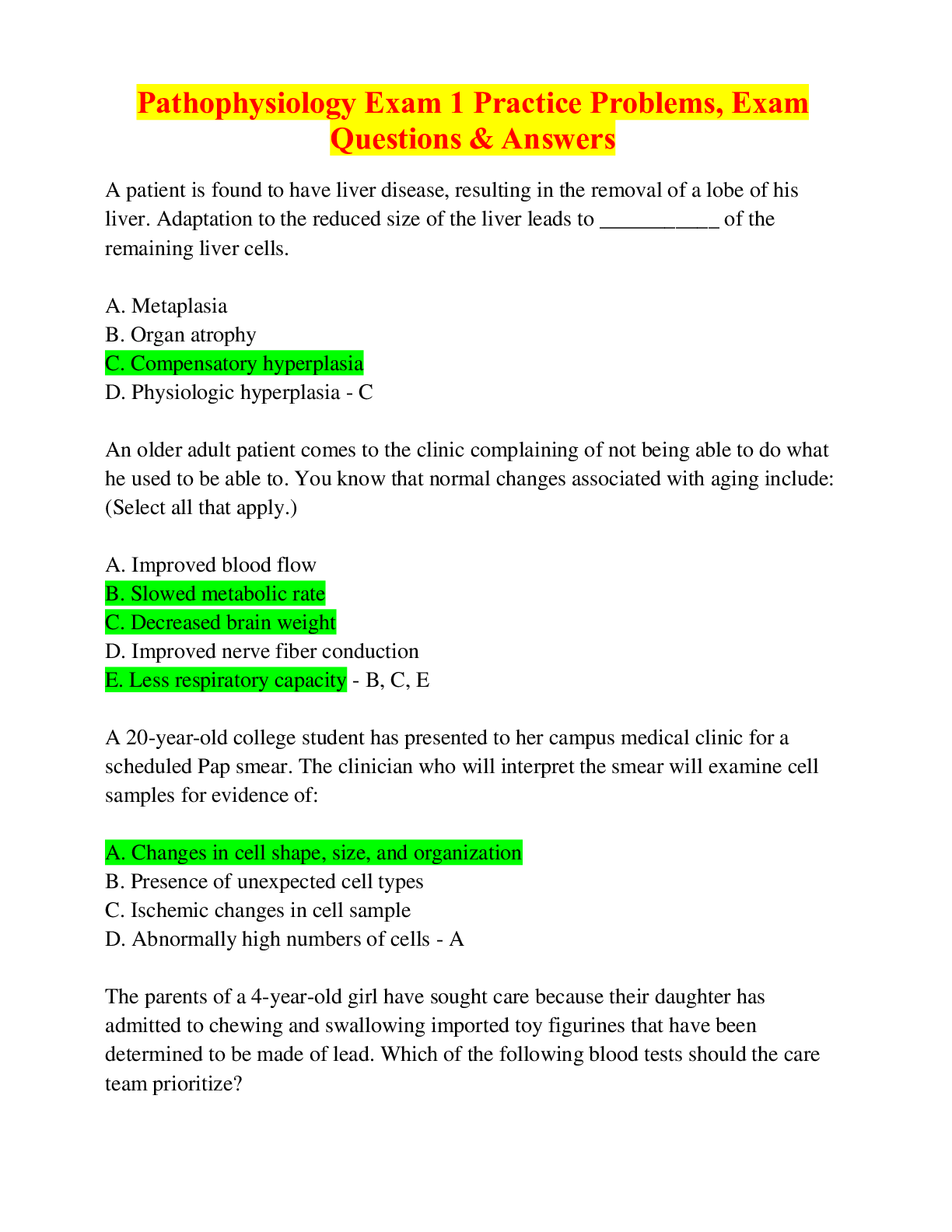
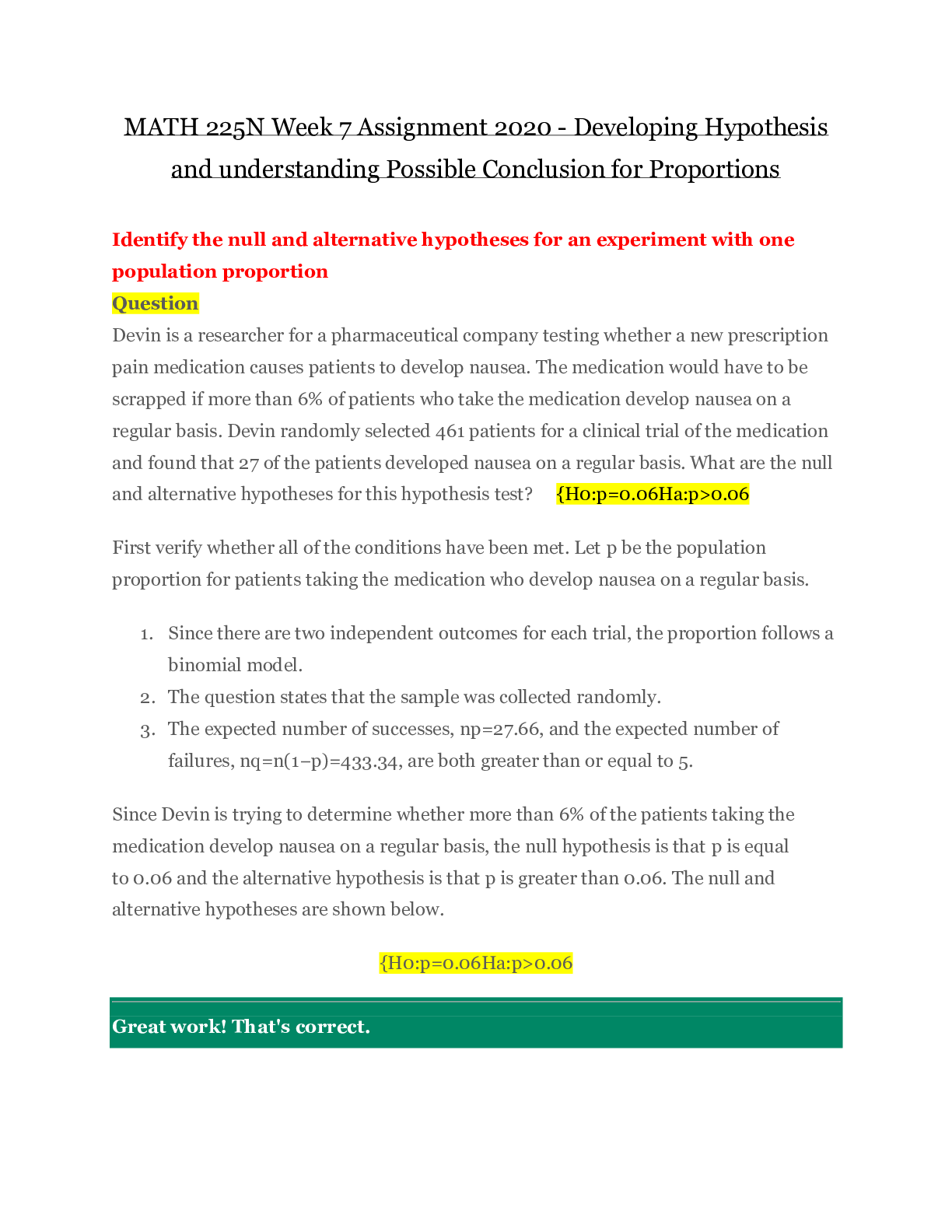
 complete solutions - Chamberlain.png)
